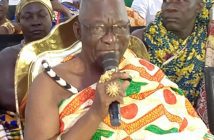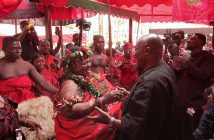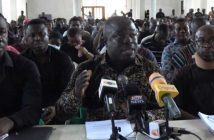Ghana is a proud steward of three castles; fifteen forts; four forts unfortunately partially in ruins; four ruins with visible structures; and two sites with traces of former fortifications.
The UNESCO has documented 32 forts and castles along Ghana’s coast as World Heritage Sites.
“These edifices testify to the once flourishing trade between the indigenous African people and the European trading companies of Portugal, the Netherlands, Denmark, England, France, Sweden, and Brandenburg of German Prussia. The history of Ghana’s government administration, judiciary, religion, health care, and even its architecture has its roots at these ancient relics.” – (Ephson, Dr. Isaac S., Ancient Forts and Castles of the Gold Coast (Ghana), Ilen Publications, Accra 1970, page 13.)
Old Ningo is a town in the Greater Accra Region of Ghana where one of these forts can be situated, is also known as Great Ningo. The inhabitants have always been a fishing and farming community. They form part of the Ga-Adangbe people. The name Ningo is derived from the Ga–Dangme words nu meaning water and ngoo meaning salt.
A publication in the Encyclopædia Metropolitana published in 1817 shows a different origin of the name, Ningo. According to the publication, “Ningo, near where the second Danish castle, Friedensburg, is placed, is 43 miles from Akra. In Krobo or Krepe, a large Negro State behind it, there is a very high mountain about 20 or 25 miles distant from the sea, and apparently capped with snow.”
It gives evidence that the name Ningo happens to be Latin for snow (Ningo in Latin), and that, the mariners would have seen the mountain in the backdrop of the native settlers and named the place Ningo. Many other early writings and references on Ningo also used the term Grande in the form Ningo Grande, (grande) translate in Latin as large or great. The Name Great Ningo naturally follows. The people of Ningo like to refer to themselves as “Nugoli”, meaning “People of Nugo” ( Nugo being a much more locally accepted pronunciation of the name Ningo) and are proud to associate themselves with the name Great Ningo. The history of the people of Ningo is closely linked to the history of the Ga-Dangme people.
The Danish were the first European settlers here, establishing the Fredensborg Fort in 1734. The town was developed as a slave-trading station as part of Danish Guinea. However, with the abolition of the slave trade, the town dwindled in size, with the fort staffed by a single person. The fort was already in ruins when the British took over on 8 March 1850 and incorporated the town into the Gold Coast. Christian Glob Dorf was Commandant from 21 June 1740 to 25 May 1743.
Fort Fredensborg, also known as the Great Ningo fort is situated along the Gulf of Guinea, in the Greater Accra Region in Old Ningo and was built in 1734.
The Danish-Norwegian fort was once used as a slave-trading station. However, with the abolition of the slave trade, it soon decayed such that by 1835 only one man was stationed in the fort ‘to maintain the flag’.
Fredensborg was already in a state of ruin when it was handed over to the British on March 8, 1850, along with other Danish possessions, and has not been restored till date.
Source: myghanadaily.com





